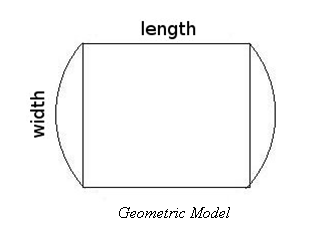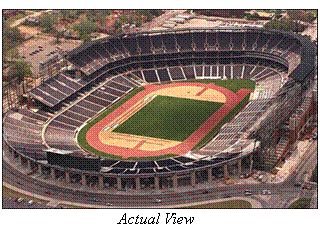|
D |
Athletics
Track Input: Standard Input Output: Standard Output |
The London Olympics is approaching very shortly – in just three years. Three years might not sound as that small a time to say ‘just’, but it is indeed for those who have to organize the competition. There are so many things to do – preparing the venues, building the Olympic village for accommodating athletes and officials, improving the transportation of the entire city as the venues are located all over the city and also there will be great number of tourists / spectators during the Olympics.


One of the most important tasks is to build the stadium. You are appointed as a programmer to help things out in certain matters – more specifically in designing and building the athletics tracks. After some study, you find out that athletics tracks have a general shape of a rectangle with two sliced circles on two ends. Now the turf that is placed inside this rectangle is prepared elsewhere and comes in different shapes – different length to width ratios. You know one thing for certain – your track should have a perimeter of 400 meters. That’s the standard length for athletics tracks. You are supplied with the design parameter – length to width ratio. You are also told that the sliced circles will be such that they are part of the same circle. You have to find the length and width of the rectangle.
Input
There will be at most 1000 test cases. Each test case will be given in one
line. It will contain the ratio of the length and width of the rectangle in the
format a b. Here, a and b will be integers and both will be between 1 and
1000 (inclusive). The end of the input will be indicated by a line containing 0 0.
Output
For each test case, output a line in the following format – “Case n: L W” where n is the case no (starting from 1) and L and W are length and width of the rectangle (in meters) respectively. Round your output to one digit after the decimal place.
Sample Input
Output for Sample
Input
|
3 2 5 4 0 0 |
Case 1: 117.2 78.1 Case 2: 107.3 85.8 |
Problem setter: Sabbir Yousuf Sanny, Special Thanks: Manzurur
Rahman Khan